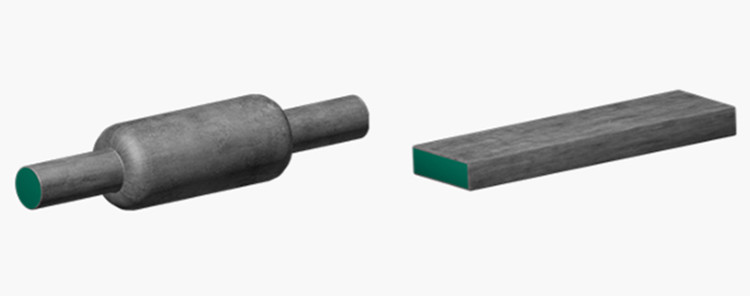- tyler@kirail.com
- +86 15603721115
Forging blank processing is a process of forging production. The quality and productivity of forging blanks will have an important impact on the quality, performance, life of forgings and the economic benefits of enterprises. The processing technology, equipment accuracy and performance of forging blanks determine the quality of blanks. The quality of forging blanks directly affects the accuracy of turning, and the quality of turning affects the accuracy and efficiency of grinding. Therefore, the selection of forging blanks plays a very important role in the entire forging process. The selection principle of forging blanks should be to reduce production costs as much as possible on the premise of meeting the use requirements, so that the products have market competitiveness. Next is the selection principle of forging blanks, which mainly includes the following points:
1. Process principle
The use requirements of forgings determine the shape characteristics of blanks, and various different use requirements and shape characteristics form the corresponding blank forming process requirements. The use requirements of forgings are reflected in external qualities such as shape, size, processing accuracy, surface roughness, and internal quality requirements such as chemical composition, metal structure, mechanical properties, physical properties and chemical properties. For forgings of different uses, the process characteristics of the forging materials (such as forging performance, welding performance, etc.) should be considered to determine the blank forming method to be adopted. When selecting the blank forming method, the machinability of subsequent processing should also be considered. For some blanks with complex structures that are difficult to form using a single forming method, not only the possibility of combining various forming schemes should be considered, but also whether these combinations will affect the machinability.

2. Adaptability principle
The adaptability principle should be considered when selecting the blank forming scheme. According to the structural shape, size and working conditions of the forging, a suitable blank scheme should be selected. For example, for stepped shaft parts, when the diameters of each step are not much different, bars can be used; when the difference is large, forged blanks should be used. Forgings with different working conditions, the type of blanks selected is also different.
3. The principle of taking into account production conditions
The selection of the forging blank forming scheme should be based on the on-site production conditions. The on-site production conditions mainly include the actual process level, equipment conditions, and the possibility and economy of external cooperation in on-site blank manufacturing, but at the same time, it is also necessary to consider the use of better blank manufacturing methods as production develops. Therefore, when selecting blanks, the existing production conditions of the enterprise, such as equipment capacity, employee technical level, etc., should be analyzed, and the existing production conditions should be used as much as possible to complete the blank manufacturing task. If the existing production conditions are difficult to meet the requirements, the forging material and/or blank forming method should be changed, and outsourcing or outsourcing can also be used.
4. Economic principle
The economic principle is to make the cost of forging materials, energy consumption, wages and other expenses low. When selecting the type of forging blank and the specific manufacturing method, several pre-selected options should be economically compared on the premise of meeting the requirements of the parts, and the option with lower comprehensive production cost should be selected. Generally, when selecting the type and manufacturing method of forging blanks, the size and shape of the blank should be as close as possible to the finished part to reduce the processing allowance, improve the material utilization rate, and reduce the workload of machining. However, the more precise the blank is, the more difficult it is to manufacture and the higher the cost. Therefore, when the production plan is large, a blank manufacturing method with high precision and high productivity should be adopted. At this time, although the one-time investment is large, the increased blank manufacturing cost can be compensated by reduced material consumption and machining costs. The general principle is that when single pieces are produced in small batches, free forging, manual arc welding, sheet metal benchwork and other forming methods can be used; when batch production is carried out, machine molding, die forging, automatic submerged arc welding or other methods can be used.